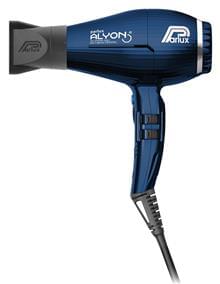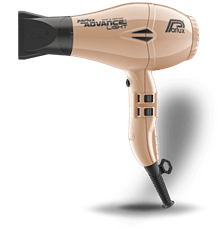Hairdryer operation: how does a hairdryer work?

The hairdryer was invented in France by the hairdresser Alexander Godefroy at the end of the nineteenth century and is now taking part of our everyday life. Did you ever ask yourself how the hairdryer is operating and why its motor is so important? Find it out reading this article together with some tips on the best Parlux models.
The hairdryer was invented at the end of the Nineteenth century in France by the hairdresser Alexander Godefroy. Obviously, the operation of this primitive hairdryer was very different from that of the nowadays hairdryers: it was a kind of a cap connected to the chimney pipe of a stove.
To be able to find the hairdryer patent realized by the U.S inventor Gabriel Kazanjian it’s necessary to do an historical jump to 1911. In that case, the instrument presented an electric heating element which generated an air flow operating by hand via a crank.
Finally, in the 1920s, the first full electric hairdryers appeared on the market. They were inspired by the vacuum cleaners generating exhaust air, but these early models were bulky and heavy.
The innovation of Parlux in the hairdryer’s operation
One of the greatest innovations in the world of professional beauty was the radical change in the construction materials of the hairdryer. In fact, in 1977 Parlux presented its Parlux Superturbo 1500 hairdryer, the first hairdryer in the world made of plastic, a much lighter and safer material. Such consensus is obtained that the operation of the hairdryer and its dimensions are perfected and improved, to the point of giving rise to the hairdryers we know today and that are appreciated all over the world.
But how does a hairdryer work?
The operating system of a hairdryer is rather simple and is based on three main fundamental components:
- the motor
- the fan
- the resistance
The motor is the key of the hairdryer’s operation
The hairdryer operation depends on an electrical motor generating a hot or cold air flow which is essential to dry the hair. This motor moves a fan that takes the air in and move it. The power of the hairdryer generally varies between 700 and 2500 watts.
The motor affects the quantity and the speed of the air, which in technical terms is called air flow.
The correct balance between power and air flow are the elements that distinguish a professional hairdryer from a home one.
Parlux models and their operation
As explained above, for the proper functioning of a hairdryer, the motor is fundamental and when choosing a new hairdryer model is a matter to be seriously evaluated. The best hairdryers combine the motor power with a very low energy consumption and negative ion and ceramic technology, that help to dry hair in a very quick way, eliminating the static electricity and do not dry them out.
Here are some examples
Parlux ALYON®
 Ergonomic and technological, Parlux Alyon® is the result of over 40 years of experience in the hair accessory industry. It offers the best operation ever in terms of light-weight, long-life, easy-to use possibilities and obviously best performances.
Ergonomic and technological, Parlux Alyon® is the result of over 40 years of experience in the hair accessory industry. It offers the best operation ever in terms of light-weight, long-life, easy-to use possibilities and obviously best performances.
- Motor K-ADVANCE® Plus – longer life and power
- New variable geometry resistance
- Very light components
- Air Ionizer Technology®
- HFS system, inner hair catching system
- Anti heating front body
- Power of 2250 Watt
- Air flow 84 84 m3/h
- Life of 3.000 hours
Parlux Advance®
 The new K-ADVANCE® motor of the Parlux Advance® model assures superior performances based on much more power and long-life of the tool:
The new K-ADVANCE® motor of the Parlux Advance® model assures superior performances based on much more power and long-life of the tool:
- Ionic & Ceramic Technology®
- Anti-heating front body
- Very light components
- Power of 2.200 Watt
- Air flow 83 m3/h
- Life of 2.500 hours
Parlux 3200 Plus®
 The operation of this hairdryer has been improved to obtain a higher power and a new aspiration concept. In addition, the Parlux 3200 Plus® is light, easy-to-use and makes the hairdrying a better experience thanks to a greater air flow
The operation of this hairdryer has been improved to obtain a higher power and a new aspiration concept. In addition, the Parlux 3200 Plus® is light, easy-to-use and makes the hairdrying a better experience thanks to a greater air flow
- Very light components
- Power of 1.900 Watt
- Air flow 71 m3/h
- Life 2.000 hours
Are you looking for a resistant, professional hairdryer?
Look at the most powerful Parlux models

 compare the products
compare the products